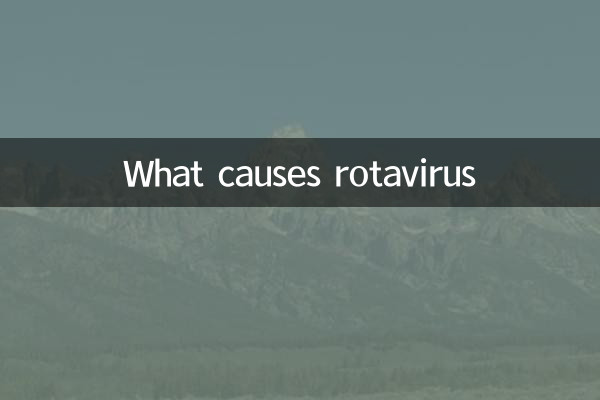What causes rotavirus
Rotavirus is one of the major pathogens causing diarrhea in infants and young children, resulting in a large number of hospitalizations and even deaths of children worldwide every year. Understanding the transmission routes, pathogenic mechanisms and preventive measures of rotavirus are crucial to protecting children's health. Below is a detailed analysis of rotavirus.
1. Basic information about rotavirus

Rotavirus belongs to the Reoviridae family and is a double-stranded RNA virus. Its name comes from the "wheel-like" appearance of viral particles under an electron microscope. Rotavirus is mainly divided into seven groups: A, B, C, D, E, F, and G. Group A is the main type that causes human infection.
| Virus type | primary host | Pathogenicity |
|---|---|---|
| Group A rotavirus | humans, animals | high |
| Group B rotavirus | human | middle |
| Group C rotavirus | humans, animals | Low |
2. Transmission routes of rotavirus
Rotavirus is primarily spread through the fecal-oral route, but can also be spread through contact with contaminated surfaces or objects. The following are its main modes of transmission:
| Communication method | Detailed description |
|---|---|
| Fecal-oral route of transmission | The virus is excreted in the feces of an infected person and ingested by others after contaminating food or water sources. |
| contact spread | You become infected by not washing your hands after touching objects contaminated with the virus (such as toys, doorknobs). |
| droplet spread | In rare cases, the virus may be spread through respiratory droplets. |
3. Pathogenesis of rotavirus
After rotavirus infection, it mainly invades small intestinal epithelial cells, causing cell damage and dysfunction. The pathogenic process can be divided into the following stages:
| stage | Pathological changes |
|---|---|
| virus adsorption | Viruses bind to host cell receptors through surface proteins. |
| Virus invasion | The virus enters the cell and releases RNA, starting to replicate. |
| cell damage | Virus replication leads to cell apoptosis or necrosis, affecting intestinal absorption function. |
| clinical symptoms | Watery diarrhea, vomiting, fever, etc. |
4. Preventive measures against rotavirus
The key to preventing rotavirus infection is vaccination and hygiene management. The following are the main preventive measures:
| measure | Specific content |
|---|---|
| Vaccination | Oral rotavirus vaccines (such as Rotarix, RotaTeq) are effective in preventing infection. |
| hygiene habits | Wash your hands frequently, disinfect toys and surfaces, and avoid contact with infected people. |
| food safety | Make sure food and drinking water are clean and avoid raw food. |
5. Treatment of rotavirus
There are currently no specific antiviral drugs, and treatment is mainly symptomatic support:
| Treatment | Specific measures |
|---|---|
| fluid therapy | Oral rehydration salts (ORS) or intravenous rehydration to prevent dehydration. |
| nutritional support | Continue breastfeeding or offer easily digestible food. |
| Symptomatic treatment | Antipyretic, antiemetic and other drugs can relieve symptoms. |
Conclusion
Rotavirus is an important pathogen of childhood diarrhea and is mainly transmitted through the fecal-oral route. Vaccination and good hygiene are key to preventing infection. Once infected, fluids should be rehydrated and medical help should be sought promptly to avoid serious complications.

check the details

check the details